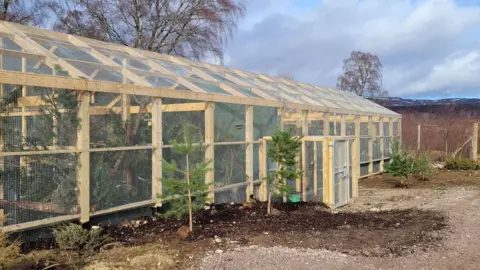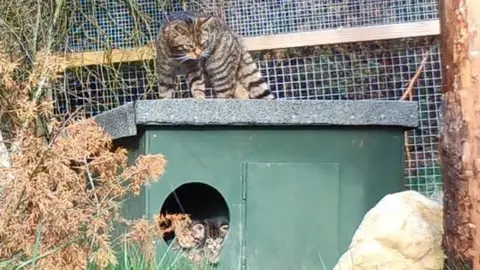Hope Scottish wildcat kittens could help save species
Scottish wildcat kittens born at an animal park could be among the first to be released into the wild as part of a project trying to save the species.
In the wild the cat is extinct or on the brink of extinction, according to research.
The Saving Wildcats project is breeding wildcats in captivity with the aim of releasing some in the Cairngorms.
The initiative has announced the birth of the first kittens - a total of eight in three litters.
Sixteen adult cats were paired up earlier this year after arriving at the park in 2021. The project team hope more kittens could be born in coming weeks.
David Barclay, Saving Wildcats conservation manager, said: "Put simply, these kittens are the future of wildcats in Scotland.
"Decades of extensive research has shown the species is highly likely to go extinct in Britain if we do not carry out releases to restore our critically endangered wildcat population."
 Saving Wildcats
Saving Wildcats Saving Wildcats
Saving WildcatsSo far this breeding season, Droma has three kittens, Caol Ila also has three kittens and Torr has two.
The kittens will be sexed, microchipped, vaccinated and health-checked at about eight to 10 weeks old.
Led by the Royal Zoological Society of Scotland (RZSS), Saving Wildcats is working with national and international experts to restore the critically endangered wildcat population by breeding and releasing them into selected locations in the Cairngorms National Park.
 RZSS/Saving Wildcats/PA
RZSS/Saving Wildcats/PAPlans are being made for the first releases in 2023. All released wildcats would be fitted with a GPS collar so their movements and behaviour could be recorded.
The project would also seek to tackle the problems behind the decline in the species.
Dr Helen Senn, head of conservation and science at RZSS, said numbers in the wild had declined due to habitat loss, hunting and inter-breeding with domestic cats.
